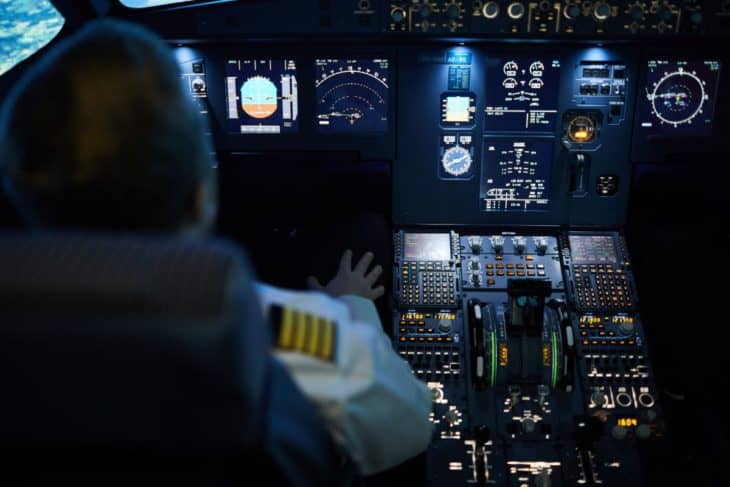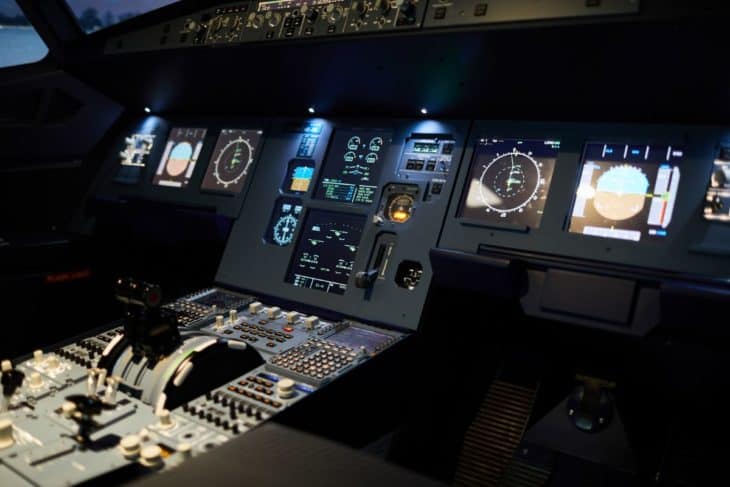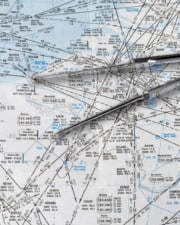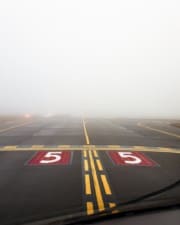Many people take flight and aviation for granted. They get on a plane, relax and enjoy the ride for a few hours, then get off the plane again. How can planes fly for hours at 30,000 feet and not experience any problems? Pilots and crew operate by a set of rules, one of which is called Instrument Flight Rules, or IFR.
Table of Contents
What is IFR?
Instrument Flight Rules (IFR) is one of the two sets of regulations that control the various facets of civil aviation and aircraft operations.
These rules and regulations were established by the Federal Aviation Administration (FAA) to designate and control the flight conditions outside of which visual flying may not be safe.
In IFR aviation, the pilot uses instruments in the flight deck to control, guide, and adjust the plane.

What is the Difference Between IFR and VFR?
There are a few major differences between IFR and VFR.
IFR
IFR rules are put into play when the conditions are not right for VFR (visual flight rules). If a pilot is flying using IFR rules, then he is flying under the direction of the air traffic control team (ATC).
The ATC will be responsible for guiding the aircraft in terms of altitude, direction, and speed. In general, IFR is going to be used when the visibility in the air drops under two miles.
If visibility is less than two miles, then pilots will not be able to spot and react to changing flying conditions quickly enough to avoid hazards.
VFR
Visual flight rules are the other set of regulations that were put into effect by the FAA. In general, a pilot will fly under VFR when he or she can see clearly the direction of the aircraft, identify hazards, and adjust appropriately.
Using VFR, the pilot is going to navigate based on what he or she sees outside of the plane. Pilots who fly under VFR are flying without tight control from the ATC.
In order for a pilot to fly under VFR, visual meteorological conditions (VMC) need to be maintained.
The pilot will be required to observe the area outside the cockpit to navigate safely. Pilots under VFR need to avoid other aircraft and obstacles.
Is IFR Safer than VFR?
Both IFR and VFR conditions can be safe under the right conditions. For example, when flying conditions dictate a switch to ATC guidance, IFR is going to be safer than VFR.

When the weather is clear, the pilot can see potential hazards faster than ATC, so VFR might be safer. As a whole, IFR is more challenging than VFR; however, pilots that are able to master IFR flying will become better pilots. This makes them safer.
When a pilot is granted IFR privileges, the pilot can fly into the clouds under conditions of zero visibility. Clearly, this is a challenging condition; however, pilots who are certified to fly IFR have demonstrated proficiency in multiple areas.
An instrument rating that leads to IFR privileges also means the pilot has already been granted VFR privileges. Because of the proficiency ceiling that IFR pilots must attain, they are typically seen as better pilots. When the conditions mandate IFR conditions, flying under IFR is safer than VFR.
How is Aircraft Separation Determined Under IFR?
Separation is the term used to describe the distance between an aircraft and the various obstacles in the sky. When a pilot is flying by IFR, he or she is depending on the ATC for guidance.
This means the ATC is responsible for separating aircraft in the air, avoiding a potential mid-air collision. ATC will maintain separation for IFR aircraft using a variety of parameters. These include:
- The route of the different flights
- The distance between the various flight paths
- How fast the planes are flying
- How high each plane is operating
Unlike driving, which mainly exists in two dimensions, flying is a three-dimensional operation. Therefore, the ATC has a lot of parameters to consider.
ATC uses radar to monitor the positions of various planes in the air. When a pilot is flying under IFR, he or she is required to provide position reports unless the ATC confirms radar contact.
If a pilot is flying under IFR, the ATC will grant clearance for the various parts of the flight. This clearance is going to place limits on the various parameters above.
If the pilot wants to exceed any of the clearance limits, he or she must request a new clearance from the ATC. This is done to make sure plenty of separation exists between planes that are in the air.
Is IFR Different from IMC?
It is critical for everyone to understand the difference between the weather conditions and flight plan type. A flight plan type is dictated by either IFR or VFR.
Weather conditions are designated either visual meteorological conditions (VMC) or instrument meteorological conditions (IMC). The weather conditions may play a role in deciding whether a flight will be dictated either by VFR or IFR; however, they are not the only condition.
If an IFR flight takes off and encounters VMC, this flight does not suddenly become a VFR flight. Therefore, a flight plan that has been designated IFR might still fly a significant portion of the time under VMC.
On the other hand, it is also considered extremely dangerous to conduct a VFR flight under IMC. Sometimes, the flight plan or weather conditions may change in a VFR flight as the pilot heads into IMC conditions.
This can lead to something called spatial disorientation, where the pilot has trouble figuring out where the plane is in the air with reference to other obstacles in the vicinity.
This is one of the most common causes of aviation crashes. For this reason, it is critical for every pilot to know the differences between the flight plan type and the weather conditions.
What are the Qualifications to Fly IFR?
There are a number of qualifications that need to be met in order for a pilot to fly under IFR. First, the pilot needs to meet the various experiencing requirements.
The pilot needs to be rated to fly using instruments and have flown at least six instrument approaches during the preceding six months.
The pilot also needs to demonstrate proficiency with holding procedures, course interception, and nav-aids.
It is important for pilots to practice instrument approaches under both IMC and VMC to demonstrate proficiency. During these practices, a safety pilot is required to ensure the approach is handled appropriately. The duty of the safety pilot is to observe and avoid other aircraft that are in the air.
Finally, in order to fly under IFR, the aircraft must also be capable of doing so. The navigational equipment on the plane needs to be inspected and tested within a certain period of time before the flight.
Some of the instruments that are required to fly under IFR include a heading indicator, a sensitive altimeter, an altitude indicator, radios, an alternator, a gyroscope, and a turn coordinator.
If both the pilot and aircraft are capable of flying IFR, then an IFR flight plan can be granted. It is important for pilots who want to fly under IFR to make sure they meet these qualifications.
Related Posts













